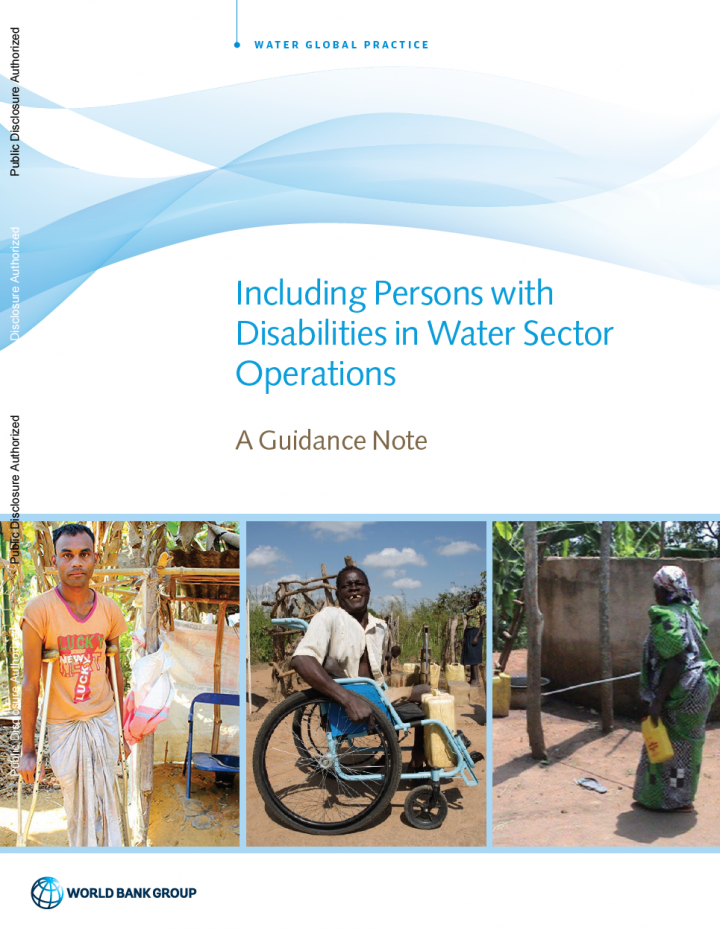Including Persons with Disabilities in Water Sector Operations - A Guidance Note
Word Bank Group (2014)

Published in: 2014
Pages: 50
Publisher:
Word Bank Group
Author:
Word Bank Group
Uploaded by:
SuSanA Admin
Partner profile:
common upload
967 Views
10 Downloads
Globally, more than a billion people—approximately 15 percent of the world’s population, or one in seven persons—have disabilities. Of those, 80 percent live in developing countries. This number is expected to increase as the prevalence of disability is impacted by disease, war and conflict, natural disasters, and road traffic injuries, among other factors. In addition, persons over the age of 60 comprise 12 percent of the world’s population; that proportion is set to rise over 20 percent by 2050. There is a strong correlation between aging and the onset of disability.
Persons with disabilities make up a sizable portion of the 2.4 billion people who still lack access to sanitation, and the 663 million who lack access to safe drinking water. Although there are inadequate data to assess the exact number of persons with disabilities who face water scarcity and lack of access, there is evidence that points to the relative marginalization and invisibility of this population in water sector development programs. A 2011–12 survey of 16 Area Development Programs run by World Vision in Ethiopia showed that 96.6 percent of people with disabilities and the elderly faced difficulties in accessing basic water facilities.
Bibliographic information
Word Bank Group (2014). Including Persons with Disabilities in Water Sector Operations - A Guidance Note. Word Bank Group
Filter tags
English Guidelines and manuals Politicians and local decision makers Practitioners















